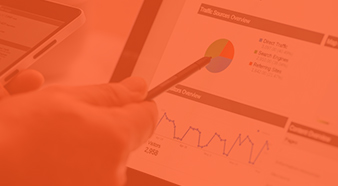There are many benefits to using website analytics to track visitor activity and interaction on a website. Google Analytics, in particular, is a powerful free package and highly recommended for many small online retailers. One of the key features is the e-commerce tracking which can add an extra layer of data to the results and helps to track the Return on Investment of all marketing activity.
If you run an e-commerce site and are using Google Analytics, you need to activate the e-commerce reporting in the profile settings. You also need to make some adjustments to your analytics code on the checkout pages of your site, with some additional tagging that will record product and price activity for each order. If necessary, check with your web designer about how this can be implemented and, once done, check that the data being recorded matches the actual order details and values being received through the site.
Once this tracking is working correctly, you will see a new section of data appear in the Analytics reporting menu. This can give you information on sales revenue by day, average order values, conversion rates and data on the number of visits or days to purchase that a customer may take. In addition, you can get a breakdown of sales by product type and category which should reflect your own sales data, but can then be used within other standard or custom reports to get a better insight into marketing results, location of customers, repeat buyers and so on.
The new version of Google Analytics also now includes the opportunity to track multi-channel funnels. Whereas most analytics tracking will record a “goal’ or sale from the current visit, this new report looks at interactions of visits from most digital media channels, including clicks from paid and organic searches, affiliates, social networks, and display ads. This enables you to understand how different channels work together to create sales and conversions, and how many visits may be taken as part of the buying process before the sale is made.
This article was first published in the September 2011 edition of our monthly newsletter.
To find out more about Google Analytics and how you can use it effectively for your business, please get in touch for an initial, no obligation, discussion. Alternatively, if you are thinking of using website analytics for the first time, or have already started tracking your visitor data, we can provide you with a FREE analytics assessment to give you an idea of the key elements you should be tracking and reviewing to increase the performance of your website.



